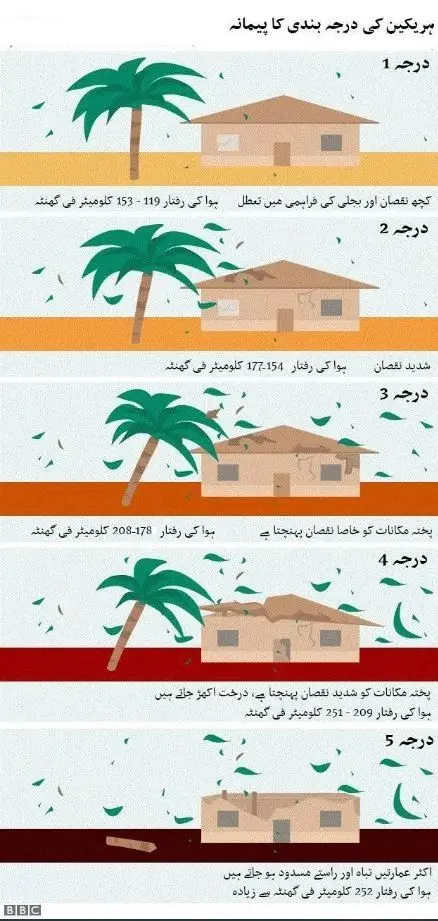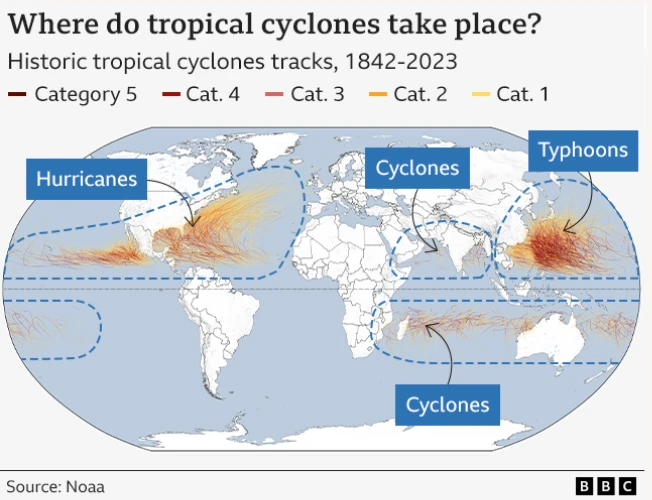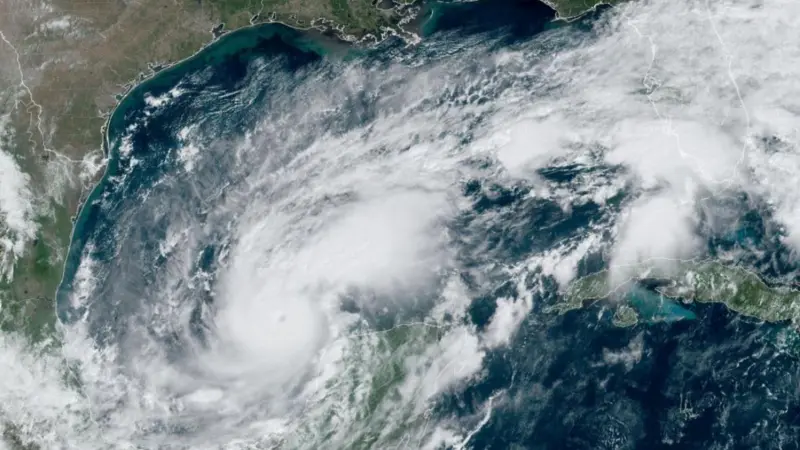Hurricane Milton Strikes Florida: Why Are Hurricanes Becoming More Powerful?
Hurricane Milton has made landfall in Florida, leaving devastation in its wake. The storm has claimed lives in the Atlantic coastal regions, destroyed over a hundred homes, and left more than two million people without electricity.
Initially classified as a Category 5 hurricane with winds reaching speeds of 270 km/h, Milton has since weakened to a Category 1 storm.
This is the second hurricane to hit Florida in just two weeks, following the devastating Hurricane Helen, which caused at least 225 deaths across several states, including Georgia, South Carolina, Tennessee, Virginia, and North Carolina.
The National Oceanic and Atmospheric Administration (NOAA) warned in August that environmental and oceanic conditions were conducive to an extremely active hurricane season, with a record number of storms expected.
How Hurricanes Form

Tropical storms form over warm ocean waters near the equator. As warm air rises, it creates a low-pressure area. When the air cools, more warm air is drawn in from below, generating strong winds and rain.
As this process intensifies, it can produce a tropical storm, with winds creating an “eye of the storm” at its center, where conditions are calm and pressure is low.
A storm becomes a tropical cyclone when wind speeds reach 63 km/h. It is classified as a hurricane when winds exceed 119 km/h. The classification ranges from Category 1 to 5, with Category 5 storms featuring winds exceeding 251 km/h.
According to NOAA, the Atlantic region typically sees 17 to 24 storms each season, with 8 to 13 becoming hurricanes, and 4 to 7 reaching major storm status.
Record-Breaking Seasons
The highest number of major hurricanes recorded in a season was seven, occurring in both 2005 and 2020. NOAA predicts that 2024 could also be a significant year for hurricanes.
Reasons Behind the Increasing Hurricane Activity
Experts attribute part of this phenomenon to record ocean temperatures and potential changes in regional weather patterns. The weakening of El Niño and a possible transition to La Niña creates a more favorable environment for storms in the Atlantic.
Matthew Rosenkranz, a NOAA hurricane expert, noted that “the tropical storms Barrel, which formed in late June and early July 2024, broke several longstanding records in the Atlantic basin, indicating an active season.”
Unlike the Atlantic, NOAA has already predicted “below normal” hurricane activity in the central Pacific region.
Naming Hurricanes

The World Meteorological Organization has established six lists of names for hurricanes, which are recycled every six years. Naming hurricanes helps convey warnings and prepare the public more effectively.
In 2024, the names for Atlantic hurricanes include Alberto, Barrel, Chris, Debbie, Ernesto, Francine, Gordon, Helen, Isaac, Joyce, Kirk, Leslie, Milton, Nadine, Oscar, Patty, Rafael, Sarah, Tony, Valerie, and William.
Impact of Climate Change on Hurricanes
While there is no evidence that climate change is increasing the overall number of hurricanes, it is likely making them more intense and associated with heavier rainfall. For instance, floods from Hurricane Katrina in 2005 were estimated to be 15 to 60 percent higher than similar floods under 1900 climatic conditions.
Hurricanes pose significant risks such as heavy rainfall and coastal flooding, which are exacerbated by climate change.
Meanwhile, rising sea levels are accelerating short-term increases in flood levels. This rise is primarily due to melting glaciers and warmer oceans. Andrew Dessler, an environmental science professor at Texas A&M University, states, “Rising sea levels increase the total depth of flooding, making today’s hurricanes more destructive than past storms.”
Given the current forecasting, researchers emphasize the need to inform the public about the risks posed by hurricanes, particularly rapidly intensifying events where wind speeds increase swiftly.
Global Trends in Hurricane Activity
According to the UN climate body IPCC, there is no expected increase in the overall number of tropical storms globally. However, as the world warms, there is a “very likely” chance that rainfall rates and wind speeds will increase, leading to a higher proportion of the most severe storms, Categories 4 and 5.
The greater the rise in global temperatures, the more severe these changes will be. The IPCC states that if global temperatures are limited to a 1.5-degree Celsius increase, the proportion of tropical storms reaching Category 4 and 5 may increase by about 10 percent. This figure could rise to 13 percent at 2 degrees Celsius and 20 percent at 4 degrees Celsius.







